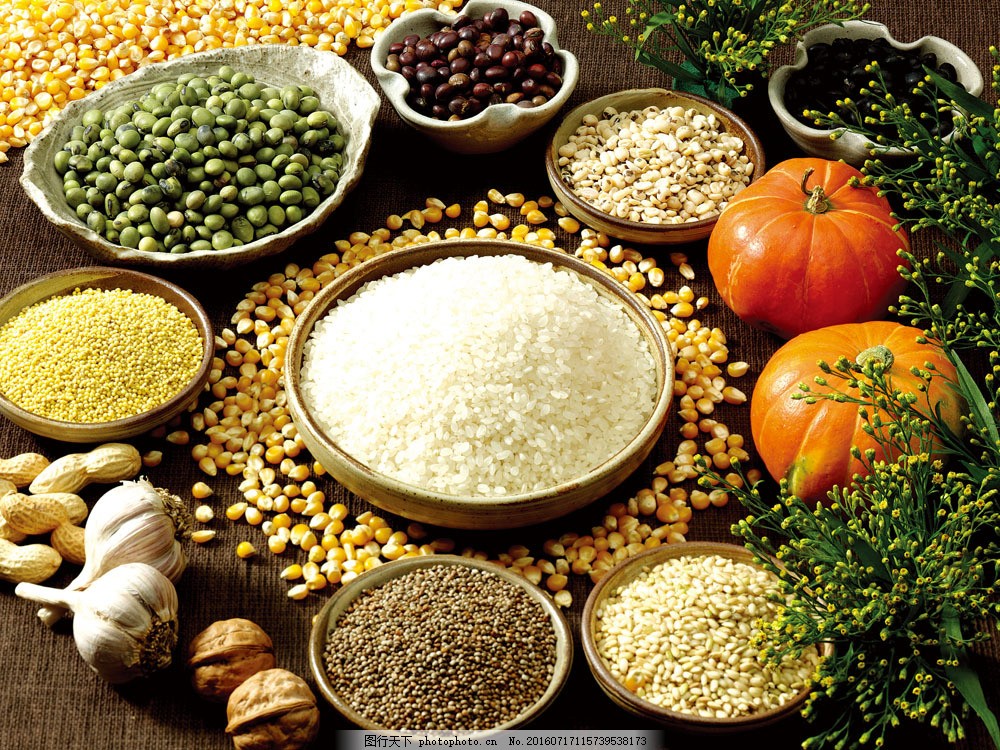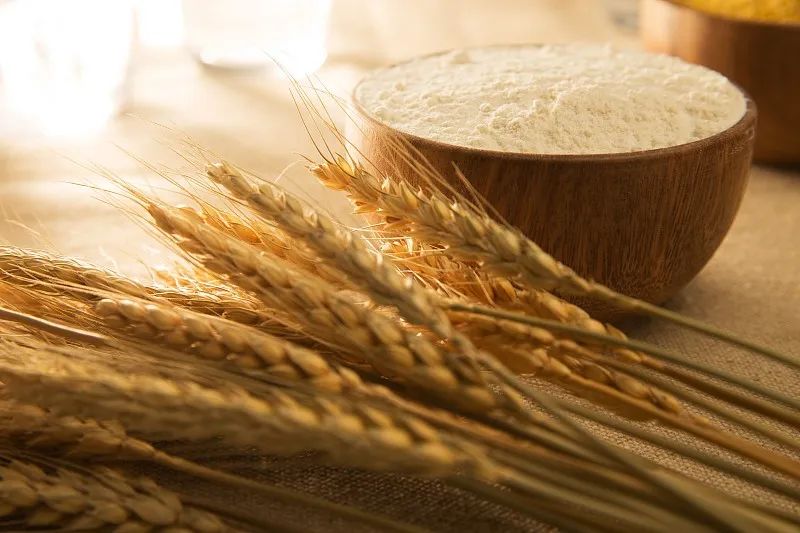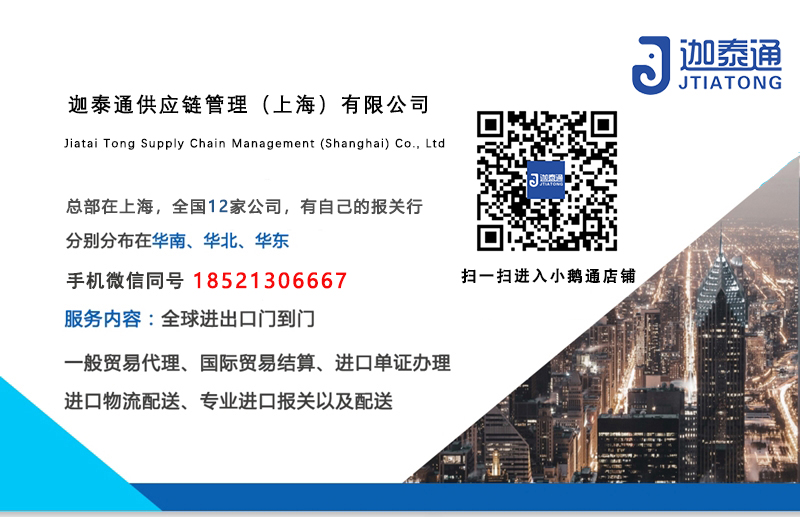Customs knowledge: What must be known when importing grain
What must be known about importing food
Agriculture stabilizes the country, food is safe for the world, and food issues are related to the national economy and people's livelihood, and food security is an important foundation of national security. Strengthening the inspection and quarantine of imported grain, strictly supervising the relevant links involved in imported grain, effectively preventing the introduction of harmful organisms and toxic substances, is of great significance for protecting China's agricultural and forestry ecology and people's health.
What preparations do enterprises need to do before importing grain?
1 ? Determine whether the type of food to be imported and the country/region of origin have obtained China's access
The General Administration of Customs implements a quarantine access system for imported grain, and the list of allowed grain types and source countries or regions can be found on the website of the General Administration of Customs.
For the first time importing a certain type of grain from an exporting country or region, the official competent authority of the exporting country or region shall submit a written application to the General Administration of Customs, and provide technical information such as the types, degree of harm, prevention and control situation, and quality and safety control system of harmful organisms that occur during the planting, storage, and transportation of the grain. In special circumstances, the import enterprise can apply and provide technical information. The General Administration of Customs can organize and conduct risk analysis, on-site inspections, and external consultations on imported grain.
The General Administration of Customs formulates specific inspection and quarantine requirements for imported grain in accordance with mandatory national laws, regulations, and technical specifications, and publishes a list of the types of grain allowed to enter and the countries or regions of origin.

2 ? Check whether overseas production, processing, and storage enterprises have been registered with the General Administration of Customs
The General Administration of Customs implements a registration system for enterprises engaged in overseas production, processing, and storage of imported grain (hereinafter referred to as "overseas production and processing enterprises"). Overseas production and processing enterprises shall comply with the relevant requirements of laws, regulations, and standards of the exporting country or region, and meet the requirements of relevant laws, regulations, and mandatory standards of China.
Imported grain overseas production and processing enterprises that implement registration management shall be recommended to the General Administration of Customs after passing the examination by the competent authorities of the exporting country or region. Upon receiving the recommendation materials, the General Administration of Customs shall conduct an examination and confirmation, and register overseas production and processing enterprises from countries or regions that meet the requirements.
The list of overseas production and processing enterprises can be found on the website of the General Administration of Customs.
What are the entry requirements for imported grain?
Imported grain shall enter the country from the designated supervision site designated by the General Administration of Customs. The conditions and management standards of the designated supervision site shall be formulated by the General Administration of Customs, and a list of eligible items can be found on the portal website of the General Administration of Customs.
What are the storage requirements for imported grain?
Imported grain shall be transported to designated storage and processing sites that meet epidemic prevention and regulatory requirements (hereinafter referred to as "designated enterprises"). Enterprises intending to engage in the storage and processing of imported grain can apply for designation to the local competent customs. Enterprises engaged in the storage and processing of imported grain should have an effective quality, safety, and traceability management system, and comply with quality and safety control requirements such as epidemic prevention and treatment. The customs shall implement quarantine supervision and management over designated enterprises.
Imported grain storage and processing enterprises can apply to the local customs for the designation of imported grain storage and processing enterprises through the China International Trade "Single Window" platform. The local customs are responsible for reviewing the application materials and conducting on-site evaluations. Enterprises that pass the review will be included in the "List of Imported Grain Processing Enterprises" and announced by the General Administration of Customs.
What are the application materials for imported grain?
The customs implements a quarantine permit system for imported grain. Before signing the import grain trade contract, the importer needs to apply for the "People's Republic of China Entry and Exit Animal and Plant Quarantine License" (hereinafter referred to as the "Quarantine License").
According to the "Measures for the Administration of Entry Animal and Plant Quarantine Approval", apply for quarantine approval procedures, obtain a "quarantine permit", and include the national food quality and safety requirements, plant quarantine requirements, and relevant requirements specified in the "quarantine permit" in the trade contract. According to the Measures for the Supervision and Administration of Entry and Exit Grain Inspection and Quarantine, when applying for a license, the cargo owner or their agent shall clearly specify the location and provide corresponding proof documents. Imported grain processing and storage enterprises must first apply for the contact form for the preliminary inspection of imported grain quarantine with the local customs.
The importer shall apply for a "quarantine license" by presenting the contact list for preliminary inspection of imported grain quarantine, and fill in and submit relevant application materials by logging on the "Internet plus+Customs" platform.

What is the entry declaration procedure?
The consignee or its agent shall declare to the customs as required and provide the following materials:
Import goods declaration form.
Quarantine License (or Inspection Pre verification Form).
The official plant quarantine certificate of the exporting country or region.
Certificate of Origin (issued by the country of origin of the imported grain).
Quality certificate (limited to products such as barley, wheat, and soybeans that are listed in the "Catalogue of Entry and Exit Commodities Subject to Inspection and Quarantine" and have entry quality inspection requirements).
Agricultural genetically modified organisms safety certificate (limited to those declared as genetically modified products).
Fumigation certificate (only applicable to fumigated products).
Trade contracts or letters of credit, invoices, bills of lading.
Other documents determined by bilateral agreements, protocols, memorandums, and regulations of the General Administration of Customs, such as TCK inspection certificates for US wheat, inspection certificates for Canadian rapeseed, and/or quality analysis certificates.
What are the regulations for on-site customs inspection and quarantine?
The port customs shall carry out on-site inspection and quarantine of imported grain in accordance with the following requirements:
The relevant requirements specified in bilateral agreements, protocols, memorandums, and other bilateral agreements signed between the Chinese government and the governments of grain exporting countries or regions. The mandatory requirements of Chinese laws and regulations, national technical specifications, and inspection and quarantine requirements stipulated by the General Administration of Customs. The quarantine requirements specified in the 'Quarantine Permit'.
What situations will be returned or destroyed?
If the imported grain falls into one of the following circumstances, it shall be returned or destroyed:
Those who have not been included in the entry admission list of the General Administration of Customs, or are unable to provide documents such as the "Plant Quarantine Certificate" issued by the competent authorities of the exporting country or region, or do not have a "Quarantine License".
The testing results of toxic and harmful substances and other safety and health items do not meet the mandatory requirements of national technical specifications, and cannot be changed in purpose or have no effective treatment methods.
Detected genetically modified ingredients without a "agricultural genetically modified organism safety certificate" or inconsistent with the certificate.
Discovering soil, quarantine pests, and other prohibited items without effective quarantine treatment methods.
Those who are unable to change their use or have no effective treatment methods due to water moisture, mold, or other causes of spoilage or contamination by chemical or radioactive substances.
What are the workflow of grain transportation that seriously endangers grain quality and safety due to other reasons?
The port is under the jurisdiction of the customs to verify whether the transfer methods, transportation routes, and transportation tools declared by importers, reserve warehouses, or processing enterprises meet the requirements, and use the "Entry Grain Inspection and Quarantine Management System" (hereinafter referred to as the "Grain System") for transportation.
If, after the entry of grain, the originally designated storage or processing enterprise is unable to continue processing or storage due to objective reasons such as processing capacity or warehouse capacity, or needs to change the entry flow direction due to quality and safety issues of the imported grain, the importer shall handle the change of flow direction procedures with the port customs, and the customs of the original flow direction, intended flow direction, and entry port location shall review and verify. Port operating units and designated enterprises for importing grain should fill in real-time information on grain shipment, inbound and outbound, and processing in the "grain system".
The customs at the port and the location of storage and processing enterprises supervise the grain transportation process through the "grain system".
笔记
本文来源:http://www.jtia56.cn/list_70/425.html
本文标题:Customs knowledge: What must be known when importing grain
注:本文部分图文来源于网络,如有侵权联系我们删除,谢谢!
迦泰通(海关AEO高级认证企业)-服务范围
迦泰通19年进出口通关经验,10+分公司,支持全国进口申报;是海关AEO高级认证企业,专注全球门到门,一站式进口代理清关服务!我司业务范围:国际运输、进口报关清关、仓储配送、代签外贸合同与付汇、暂时进出口等。全国免费咨询电话tel:18521306667
【相关推荐】
- 了解详情 > Customs Knowledge: Safety Inspection and Supervision Require
- 了解详情 > Customs knowledge: Declaration requirements for plastics and
- 了解详情 > Customs knowledge: Food additives that are dangerous goods
- 了解详情 > Customs Knowledge: The Import of Pearlescent Pigments
- 了解详情 > Customs knowledge: Import of hazardous chemicals and their p
- 了解详情 > [Customs Knowledge] Attention! These goods require an apprai






